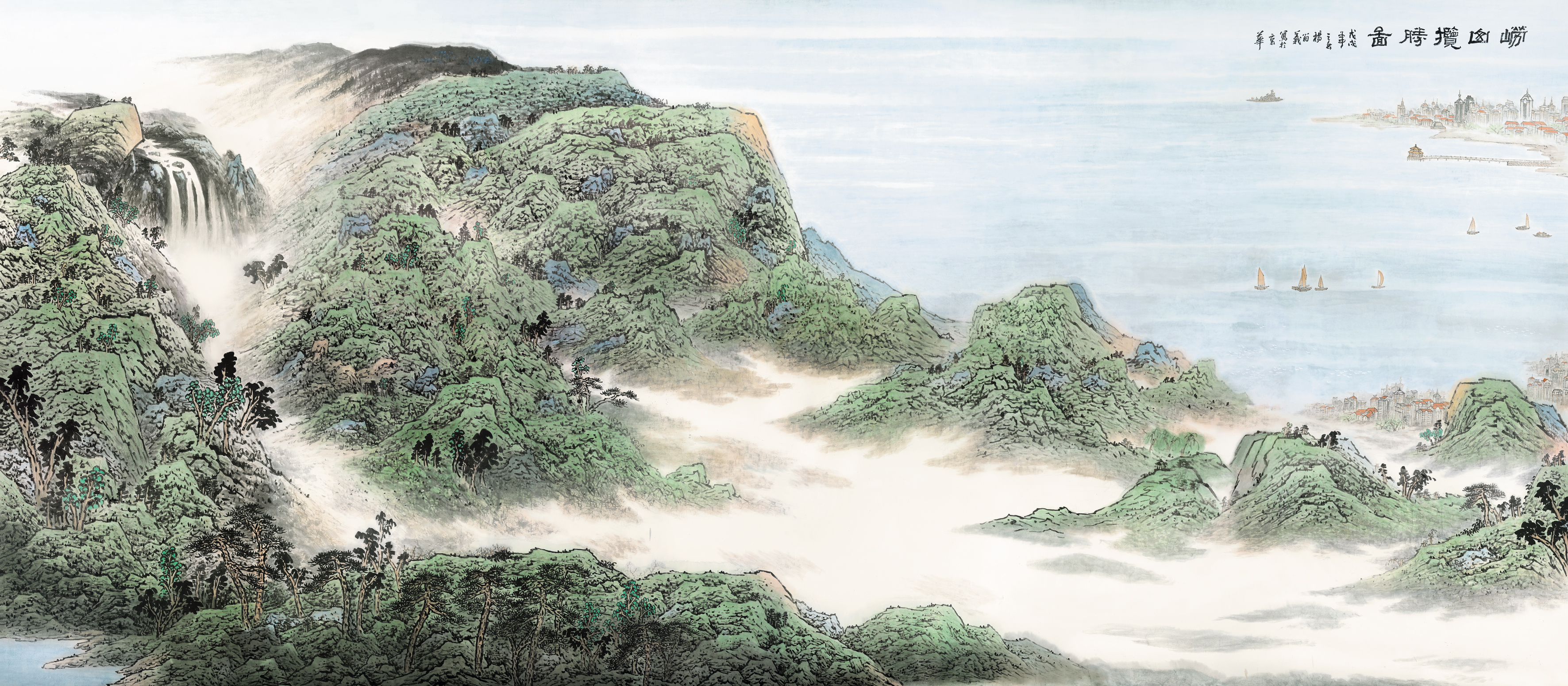Shanxi Changzhi African Heritage: The project is protected and inherited in order
Author:China Tourism News Time:2022.08.30
The intangible cultural heritage resources of Changzhi City, Shanxi Province are rich in resources, and have many influential projects that have influential inheritance in the country. In recent years, the city has carried out useful attempts and explorations in the protection, orderly inheritance, and talent training of non -heritage projects, and promoted the transformation and innovative development of non -heritage.
Master of Shanxi Provincial Arts and Crafts Ren Lin Lin is creating Bayi Kiln Porcelain Wang Wenhua Wang Wenhua
Connecting life
In Donghu Park, Xiangyuan County, Changzhi City, small wooden houses built by the lake were built into a non -genetic practice hall, cultural and creative museum, art museum, local literature museum. Essence Zhang Zhonghua, deputy director of Xiangyuan County Culture and Tourism Bureau, introduced that Xiangyuan County hopes to create a comprehensive cultural space integrating the functions of non -genetic practice exhibitions, cultural and creative products, and tourist stations.
In the non -genetic practice hall, tourists can feel the unique charm of non -heritage projects such as Xiangyuan Drum Book and Xiangyuan Painting. The performers of Xiangyuan Drum Books edited and performed, singing while playing, and praising a better life. The generation of generations of generations have passed through word of mouth, which has made this traditional form of art inheritance and developed for a century. At present, the Xiangyuan Drum Book has been included in the national -level intangible cultural heritage representative project list. Zhang Zhonghua introduced that Xiangyuan Drum Book now has more than 20 performers, with an average age of 60. He performed in the museum every day in the rotation of the museum.
Xiangyuan County also established the first county -level intangible cultural heritage experience hall in the province, and established its unique non -heritage exhibition rooms in the town and villages. Essence
In the non -heritage small theater outside the Ladu Pearl Hotel Building, Changzhi District, Changzhi City, at night, non -heritage projects such as the party's Xunzi, Jianan Drum, and Ganban Yangge staged in turn. Zhang Shutang, a representative stunts of the national intangible cultural heritage "playing teeth", is the resident performer of the small theater. At the age of 64, he has performed more than 30 years. Wu Jun, director of the non -heritage department of the Changzhi Culture and Tourism Bureau, said: "Through the platform of non -heritage theater, more and more people have learned about this endangered non -heritage project."
Guo Yonglan and her husband Shen Zhi'an are the performers of Junan Drum. They perform in the small theater every day and have a stable income. What makes them even more happy is that after watching the performance, some audiences became interested in Yan'an Drum and began to follow them to learn. As of now, the non -heritage theater has performed more than 2,000 non -heritage projects and more than 150,000 audiences have been performed.
Zheng Wei, dean of the School of Literature of Shanxi University, believes that only by activating and incorporating non -heritage into modern life, and achieving seamless connection with modern life is the best rescue and protection.
Guizheng innovation
The non -heritage projects of Changzhi have achieved good results in attracting social forces to participate in protection and connecting the protection of social life.
Since the self -raised funds of Li Weidong's self -raised funds, the self -rated Li Jimingjin Museum was established. More than 500 square meters of exhibition halls have more than 500 (sets) of the piles of flowers and paintings since the Ming and Qing Dynasties, which condenses the wisdom of a generation of martial arts craftsmen. And your heart. Li Weidong said: "The museum has been open for free since opening the museum last September, that is, I want more people to understand this ancient and precious traditional skills."
Zhao Zhiqing, the inheritor of Xiangzi Lao Rough Weaving Skills of Xiangzi Lao and Cultural Heritage in Shanxi Province. With the support of the government, through the company+base+farmers' business model, it has embarked on the road of original ecological pure handicraft production. The technique conducts productive protection, and has driven more than 3,000 rural women in surrounding counties and cities to increase their income and get rich by weaving.
The production skills of the eldest son's copper instrument are representative projects of national intangible cultural heritage. Yan Dai, a bronze instrument factory of Xingxing Furnace, is the inheritor of this project. Since the age of 17, he has learned to learn art with his uncle. He has not changed his mind at the beginning of 45 years. He has been committed to the inheritance and innovation of skills. Yan changed the coppermaking furnace and realized that the furnace temperature was not easy to control to the basic constant temperature; the introduction of modern forging, measurement and polishing equipment into the production process, greatly improved the precision of the product. "Although the production of musical instruments has mechanical auxiliary, most of the work must be completed manually. For example, the technical job of Dingyin." Yan Gai said.
Hou Yanhui, an associate professor at the School of Literature of Shanxi University, believes that joining the technology of scientific and technological is to make the crafts better. It is necessary to encourage the gradual integration of traditional craftsmanship and scientific and technological innovation, and to expand the application of traditional folk crafts in modern life.
In the Bayi Kiln traditional porcelain kiln burning production workshop, Zhang Shitai and Zhang Xusheng, in their 50s, are working with each other to complete a plum bottle. It is understood that the two have been engaged in this work for more than 30 years. Nowadays, the Bayi Kiln has built a non -heritage gathering area. After the merger of the surrounding villages, it relies on the cultural development of the Bayi Kiln color porcelain to develop rural tourism, and receive tens of thousands of tourists annually.
Tian Jingbo, an associate research hall of the Shanxi Province Intangible Cultural Heritage Protection Center, believes that because of the adherence of a large number of old craftsmen, more skills have been inherited.
Unremitting inheritance
Yan Gai introduced that because of the long -term practice cycle of the Copper Musical Instrument and the strong physical labor intensity, most young people are now reluctant to learn.
"If young people are not interested, traditional craftsmanship will not be inherited." Yan Gai said that in order to attract more young people to make copper instruments, he provided employees with free lunch and distributed transportation subsidies monthly. At the same time, develop cultural and creative products to explore the development model of copper instruments+health and physical therapy. "From 2006, I have trained more than 60 inheritors." Yan Gai said that he hoped to cultivate young people into craftsmanship and realize traditional culture and skills. Changzhi Bayi Kiln hired experts and scholars to form an expert think tank and academic team, established a technical innovation center and laboratory, and adhered to the path of simultaneous development of traditional craftsmanship and modern technology; strengthened school -enterprise cooperation, established graduate, college student practice and R & D bases. Primary and secondary school research and education bases; organize employees to study in other places each year, enter college training, encourage young people to participate in skill contests, etc., cultivate a number of young technical talents such as Ren Xianlin, and won more than 20 awards for Bayi Kiln, accumulated accumulated accumulated accumulation Industrial development stamina and talent strength.
Wu Jun introduced that Changzhi City actively promoted the inheritors of the projects such as Qinyuan Yangge and Shangdang Luozi to enter the campus campus for inheritance teaching. He set up a three -year Xiangyuan Yangge training course at Changzhi Cultural and Art School to train more than 200 students. The establishment of the Non -Heritage Theater in the Shanghai Party District not only realizes the inheritance and protection of non -heritage projects, but also cultivates and exercise a large number of inheritors of non -heritage projects. (Author: Wang Wenhua; Editor: Yang Shuo)
- END -
Every time I put on a diving suit to the bottom of the water, it is a new life experience

Now photography has become a part of the lives of the public. From the bustling ci...
Calligraphy and Calligraphy | Yang Liuyi: The old love of a Suiping painter

As early as 1999, Yang Liuyi, the pioneer and painter of Chinese city landscape pa...
